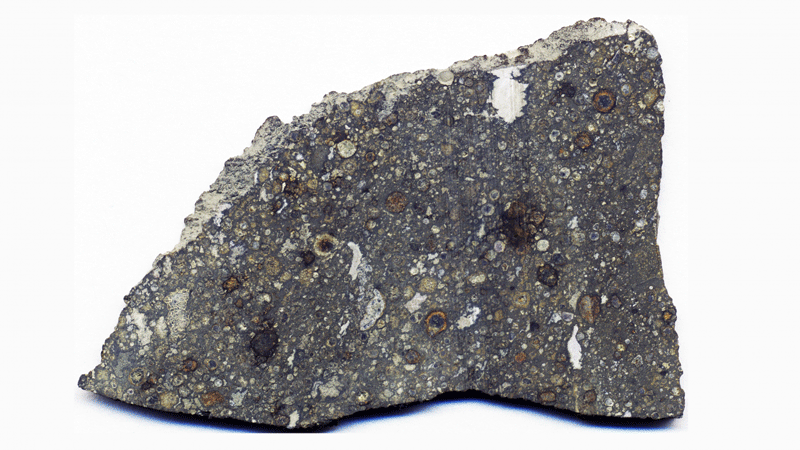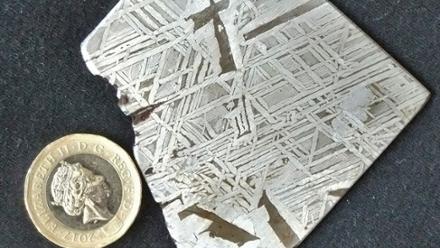Beads of glass in meteorites help piece together how solar system formed
Scientists with the University of Chicago have published an analysis laying out how beads of glass found in meteorite came to be, and what they can tell about what happened in the early solar system.

A cross-section of a piece of the Allende meteorite, containing beads of glass called chondrules. University of Chicago scientists analyzed such chondrules to find new clues about how our solar system evolved
© James St. John‘These are big questions,’ says University of Chicago alumni Nicole Xike Nie, a Postdoctoral Fellow at the Carnegie Institution for Science, USA, and first author of the study. ‘Meteorites are snapshots that can reveal the conditions this early dust experienced – which has implications for the evolution of both Earth and other planets.’
The beads of glass inside these meteorites are called chondrules. Scientists think they are bits of rock left over from the debris that was floating around billions of years ago, which eventually coalesced into the planets we now know.
Scientists can find clues about the early days of the solar system by looking at the types of a given element in a rock. Elements can come in several different forms, called isotopes, and the proportion in each rock varies according to what happened when that rock was born – how hot it was, whether it cooled slowly or was flash-frozen, what other elements were around to interact with it. From there, scientists can piece together a history of likely events.
To try and understand what had happened to the chondrules, scientists tried applying a unique angle to the isotopes.
First, they took extremely rigorous, precise measurements of the concentrations and isotopes of two elements that are depleted in meteorites, potassium and rubidium, which helped narrow down the possibilities of what could have happened in the early solar system.
From this information, the team pieced together what must have been happening as the chondrules formed. The elements would have been part of a clump of dust that got hot enough to melt, and then to vaporise. Then, as the material cooled, some of that vapour coalesced back into chondrules.
‘We can also tell you how fast it cooled, because it was fast enough that not everything condensed,’ says Nicolas Dauphas, Professor of Geophysical Sciences at University of Chicago. ‘That must mean the temperature was dropping at a rate of around 500 degrees Celsius per hour, which is really fast.’
Based on these constraints, scientists can theorise what kind of event would have been sudden and violent enough to cause this extreme heating and cooling. One scenario that fits would be massive shockwaves passing through the early nebula. ‘Large planetary bodies nearby can create shocks, which would have heated and then cooled the dust as it passed through,’ Dauphas explains.
Over the past half-century, people have proposed different scenarios to explain the formation of the chondrules – lightning, or collisions between rocks – but this new evidence tips the balance toward shockwaves as an explanation.
This explanation may be the key to understanding a persistent finding that has bedevilled scientists for decades, involving a category of elements that are ‘moderately volatile,’ including potassium and rubidium. The Earth has less of these elements than scientists would expect, based on their general understanding of how the solar system formed. They knew the explanation could be traced to some complex chain of heating and cooling, but no one know the exact sequence.
Dauphas concludes, ‘It’s a huge question in the field of cosmochemistry.’



